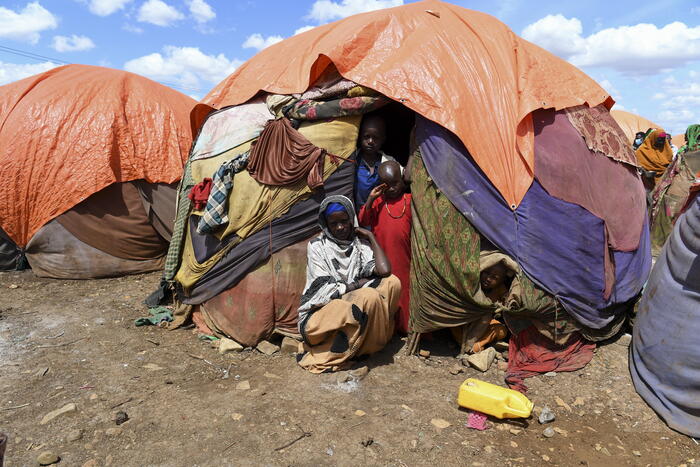Ibrahim Konate in Somalia
The Food and Agriculture Organization of the United Nations (FAO) said today that with hunger fast approaching in Somalia, there is still time to turn the tide by addressing the immediate needs of communities. Rural areas are among those most at risk.
However, unless this is accompanied by a dramatic increase in investments in resilience and livelihood support, we will never change this continuing pattern of extreme hunger.
Somalia has been on the brink of famine in recent months due to a historic drought caused by five failed rainy seasons, soaring food prices and escalating conflict. The Integrated Food Security Phase (IPC) acute food insecurity analysis specifically shows high levels of mortality in some of the highest-risk areas.
According to the latest forecast update, from January to March 2023, 1.9 million people are expected to be in IPC Phase 4 (emergency), increasing to 2.7 million from April to June. Up to 727,000 people could face catastrophic food insecurity by June 2023, leading to starvation and starvation.
“The situation in Somalia remains dire. Current levels of humanitarian assistance are helping to prevent extreme outcomes, but they are not sufficient to halt the threat of famine beyond a few months at a time,” said Etienne Peterschmitt, FAO Representative in Somalia.
“People are dying in IPC Phase 4. Yet, still there is an unrelenting focus on famine declarations as a trigger for action. Real action needs to be taken not only to help communities meet their immediate needs, but also so they can adapt their livelihoods and build resilience in the face of climate crises and economic shocks, preparing them for whatever the future may bring.”
“Sustained levels of at-scale support will be required well into mid- to late-2023 if we are to prevent, not just delay famine,” he added.
Rural communities most at risk
Prolonged and unprecedented drought conditions have left livestock, and farming communities unable to cope. Rural farming and livestock farming communities, as well as displaced communities mainly from rural areas, are among those most at risk of famine.
Their survival depends on the survival of their herds and their ability to grow crops, which has been severely hampered by prolonged drought. The nutrition of their children is inextricably linked with the health and performance of their animals. Unable to produce milk, these animals died at an alarming rate for a year.
Saving livestock and keeping them fed and healthy is important because they are the sole source of food and income for many rural communities. Preliminary results from an upcoming study in the Horn of Africa show that feeding livestock reduces the risk of acute malnutrition by up to 11% and reduces stunted children by up to 8% in pastoral communities.
Providing this support is relatively cheap, averaging around $0.4 per goat compared to $40 for goat replacement.
FAO will continue to provide cubes and vaccines for animals and restore water points, as well as cash support to help people meet their basic needs. Livelihood Assistance is severely underfunded Rural Livelihood Assistance saves lives, helps people stay in their homes when it is safe, and paves the way for future recovery.
Currently, the lack of large-scale financing to support livelihoods, climate-resilient food production and development priorities poses major challenges. This leaves livelihoods and the productive sectors on which they depend weak and vulnerable to climate and economic shocks.
FAO Crisis Response


